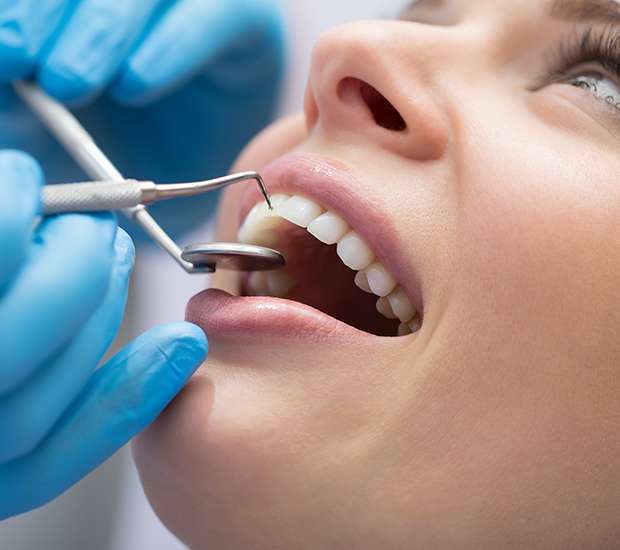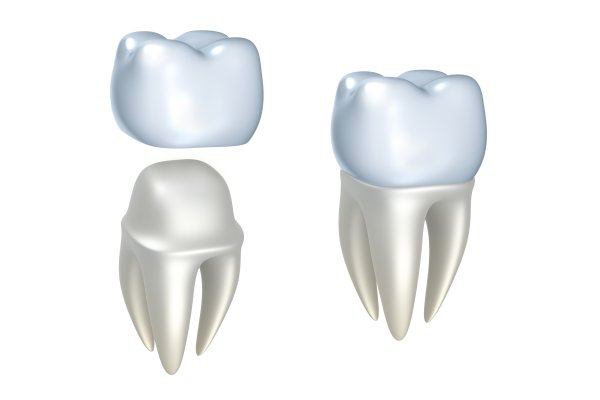Dental Bonding Anderson, CA
At Anderson Family Dentistry, we can complete a dental bonding procedure to restore your damaged tooth or to make aesthetic changes that will improve the appearance of your smile. This cosmetic dentistry solution is affordable, durable, and long-lasting. It is also non-invasive, making it an ideal restoration for children and adults who are too busy for alternative procedures like dental veneers and crowns. While people may not know so much about the process, dental bonding is a dependable cosmetic dentistry solution. If you want to learn more about restorative bonding, we encourage you to call our dental office at (530) 365-3351. We can meet with you, examine your teeth, and discuss how a bonding procedure can help improve your smile.
Cosmetic Dental Bonding: A Natural-Looking Solution
If you damage your tooth and are searching for a natural-looking restoration, consider restorative bonding. In this procedure, we apply a tooth-colored resin material to your tooth and shape the resin until it matches your naturally occurring tooth. We then harden it in place with a special dental light, effectively bonding it to the tooth. At Anderson Family Dentistry, we will ensure that, regardless of the type of restoration you receive, your smile will look amazing.
Frequently Asked Questions About Restorative Bonding
Q. Can dental cosmetic bonding fix my child's chipped tooth?
A. Yes, it can. As a cosmetic dentist, we can restore your child's chipped tooth by applying resin to their tooth and shaping it until it matches their natural one. We will use every tool available to match the shade of the resin with the child's surrounding teeth, so it blends in as best as possible. Other people will most likely not notice a difference between the bonding material and the other teeth. The only thing to note is that if the child's teeth are still growing, the child may need a revisit in the future.
Q. Will a tooth bonding procedure be uncomfortable?
A. Not at all. Bonding is a non-invasive procedure and one of the most comfortable restorations you can receive. In order to complete the restoration or to make cosmetic improvements, all we need to do is roughen the tooth slightly and apply a conditioning liquid. Next, we will apply the resin material that matches the shade of your teeth. We will shape the material to match the tooth size as well, before hardening it in place. Since your tooth structure remains intact, you will be comfortable during the procedure. In fact, most people do not need any anesthesia or pain medication for the bonding procedure.
Q. Can Restorative bonding be used to fill gaps in between my teeth?
A. Yes, it can. When you visit our Anderson dental office, we can close small gaps between your teeth using this simple procedure. The bonding procedure is an alternative to placing veneers or crowns or undergoing an orthodontic procedure. Since we can typically complete cosmetic bonding in one dental visit, it is the fastest way to complete this transformation.
Q. Can it reshape my teeth?
A. Yes. Bonding is an excellent way to reshape your teeth. We can use it to lengthen your teeth or change their width. By doing so, your teeth can appear more uniform, and we can eliminate the inconsistencies between your teeth. It only takes 30 to 60 minutes per tooth, so reshaping is much easier and faster than people may believe.
Q. Will cosmetic bonding help if my teeth are stained?
A. Yes, if you have stains on your teeth, we can use bonding to cover them. We suggest trying a whitening procedure first since this can improve the appearance of your smile with relative ease. There are times, however, when a whitening procedure is not enough to remove some of the deep or more significant stains. This is where restorative bonding can be particularly useful. We can place the resin material on top of your stained tooth or teeth in order to improve their appearance. When you visit our California dental office, we can discuss your options with you and complete the procedure in as little as one visit.
Q. Is a tooth bonding procedure reversible?
A. Yes, since we apply bonding without removing the enamel on your teeth, the process is reversible. If you want to change course and restore your teeth or change their appearance with an alternative procedure in the future, you can. While most of our patients are satisfied with the appearance of their teeth after the bonding procedure, some use this as a temporary solution while considering more long-term improvements.
Q. Is dental bonding affordable?
A. If budget is a concern, dental bonding is an affordable and viable option. Since we place and harden bonding material in our office, there is no need for participation from the dental lab. This makes the process more cost-effective than getting dental veneers or crowns. If you are weighing your options between the three, let us know. We can give you a breakdown of what each procedure will cost. For more information, call 530-365-3351 and schedule a consultation.
Q. How long will it last?
A. A Restorative bonding procedure is durable, natural-looking, and effective. There is no set timeframe for how long the resin will last. It can last for several decades or several years. Taking care of your teeth will help to increase its longevity. Be sure to brush with a soft or electronic toothbrush, so you do not risk eroding your teeth and your restoration. You need to also avoid eating food that is too acidic, while also avoiding any activities that can break or chip your teeth. While bonding material is strong and durable, it is not as strong as a dental crown can be. If you are looking for a longer lasting restoration, then you may want to consider that option as well.
Check out what others are saying about our dental services on Yelp: Dental Bonding Anderson
Questions Answered on This Page
Q. Is dental bonding uncomfortable?
Q. Can dental bonding fix my child’s chipped tooth?
Q. How long will the dental bonding last?
People Also Ask
Q. Why do people wear mouth guards?
Overall, dental bonding can be an effective procedure for patients. Your teeth will look both natural and beautiful once we are done. To learn more or to find out if this procedure is right for you, call our Anderson dental office at (530) 365-3351.
Definition of Dental Terminology
- Cosmetic Dentistry
- Cosmetic dentistry is generally used to refer to any dental work that improves the appearance (though not necessarily the function) of a person’s teeth, gums and/or bite.
- Decay
- Tooth decay is when the enamel of the tooth begins to decay and cause erosion from plaque and tartar on the teeth.
- Dental Caries
- Dental caries are also known as cavities and result from a lack of proper oral hygiene leaving plaque that forms tiny holes in the teeth.
- Dental Checkup
- A dental checkup is an appointment that involves cleaning the teeth, identifying any signs of infection and removing said signs of infection at least once every six months in the office.
- Dental Filling
- A dental filling involves restoring the structure of the tooth by using metal, alloy, porcelain or plastic to fill the tooth.
- Dental Prophylaxis
- A dental prophylaxis is a professional and detailed cleaning that involves the removal of plaque, calculus and stains from the teeth.
- Dental Sealants
- Dental sealants contain a resinous material that we apply to the chewing surfaces of the posterior teeth to prevent dental caries.
- Dentist
- A dentist, also known as a dental surgeon, is a doctor who specializes in the diagnosis, prevention, and treatment of diseases and conditions of the oral cavity.
- Gingivitis
- Gingivitis is the inflammation of gum tissue that results from plaque, other infections in the mouth and poor oral hygiene.
- Preventive Dentistry
- Preventive dentistry is the dentistry that focuses on maintaining oral health in order to prevent the spread of plaque, the formation of tartar and infections in the mouth.
- Tartar
- Tartar forms when plaque builds up on the surface of the teeth and calcifies into a hard surface that is much more difficult to remove and will require professional treatment.
- Tooth Enamel
- Tooth enamel is the protective visible outer surface of a tooth that contains the dentin and dental pulp.
Back to top of Dental Bonding




